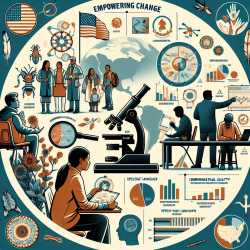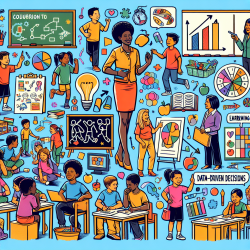Introduction
As practitioners dedicated to improving child outcomes, it is crucial to leverage data-driven insights to address health disparities effectively. The research article "Community-Based Research as a Mechanism to Reduce Environmental Health Disparities in American Indian and Alaska Native Communities" provides valuable insights into how community-based participatory research (CBPR) can be a powerful tool in this endeavor.
Understanding the Research
The study highlights the disproportionate impact of environmental pollution on American Indian and Alaska Native (AIAN) communities. Factors such as contaminated water, pollution from industrial activities, and climate change have exacerbated health disparities, including higher incidences of diabetes, respiratory diseases, and other chronic conditions.
The research underscores the importance of culturally relevant interventions, mutual respect, sustained resources, and sustainable partnerships in addressing these challenges. By involving AIAN communities in the research process, the study demonstrates how CBPR can lead to meaningful and sustainable health improvements.
Implementing the Findings
For practitioners in speech-language pathology and other fields, implementing the findings of this research can enhance outcomes for children in these communities. Here are some actionable steps:
- Engage with Communities: Build partnerships with AIAN communities to understand their unique health priorities and challenges. This engagement fosters trust and ensures interventions are culturally relevant.
- Utilize CBPR Models: Incorporate community-based participatory research models into your practice. This approach ensures that interventions are designed and implemented with community input, leading to more effective outcomes.
- Focus on Education and Awareness: Educate communities about the impact of environmental health on child development. Provide resources and tools to empower them to advocate for healthier environments.
- Leverage Data for Advocacy: Use data from research studies to advocate for policy changes and resource allocation that address environmental health disparities.
Encouraging Further Research
While the current research provides a strong foundation, there is a need for ongoing studies to explore the long-term impacts of environmental health interventions. Practitioners are encouraged to collaborate with academic institutions and community organizations to conduct further research that builds on these findings.
Conclusion
Community-based research offers a pathway to reducing health disparities and improving outcomes for children in AIAN communities. By implementing the findings of this research and engaging in further studies, practitioners can contribute to creating healthier environments and brighter futures for all children.
To read the original research paper, please follow this link: Community-Based Research as a Mechanism to Reduce Environmental Health Disparities in American Indian and Alaska Native Communities.










